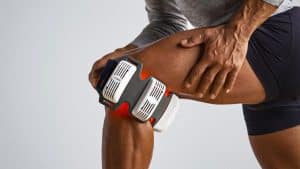“What exactly are ergonomics?” I hear you ask. “And what do they have to do with bones and joints?” It’s what happens when engineering meets physiology and psychology. In the context of the musculoskeletal system, it’s about trying to prevent problems like carpal tunnel syndrome, repetitive strain injury, and back pain.
Specifically, ergonomics involves scientists from multiple disciplines designing equipment, systems and processes that work with people’s natural capabilities and behavior. It’s about accounting for the human factors when putting together your workplace. When done right, it increases productivity and comfort, reduces human error, and most importantly, improves safety.
There are all sorts of ways you can injure yourself at work. There are obvious risks in jobs like construction, full of heavy objects and dangerous tools, but even in the office, you have to worry about your posture when you’re sitting in a chair all day or what’s happening to your wrists when you’re constantly typing. Much of the possible damage involves the bones and joints, along with the muscles, tendons and ligaments between and around them.
This is such an important topic that the National Institute for Occupational Safety and Health has issued official guidelines on how ergonomics can help avoid muscular skeletal injuries at work (https://www.cdc.gov/niosh/topics/ergonomics/). Some of this is about physical items and layout, some is about planning and training, and some involves understanding normal human behavior. Ergonomists divide their field into physical, cognitive and organizational categories.
Things like keeping aisles clear so you don’t trip are ergonomics. So are office chairs that support your back and reduce aches and pains. When it comes to posture and avoiding back problems, you can also teach your staff apparently simple but vital skills such as how to lift objects safely (bend the knees, not the back; reduce weight where possible; share loads with others; and minimize the distance carried).
Any workplace needs appropriate lighting. Temperature controls need to be considered, along with protection from the weather if outdoors. The shape and size of any equipment needs to be considered, as do methods of displaying information (whether on signs or on screen – font size, font and background color, etc.). In some situations, such as with a pregnant or disabled worker, extra steps may need to be taken.
Every industry has its own best practices when it comes to ergonomics. Make sure you know yours!




